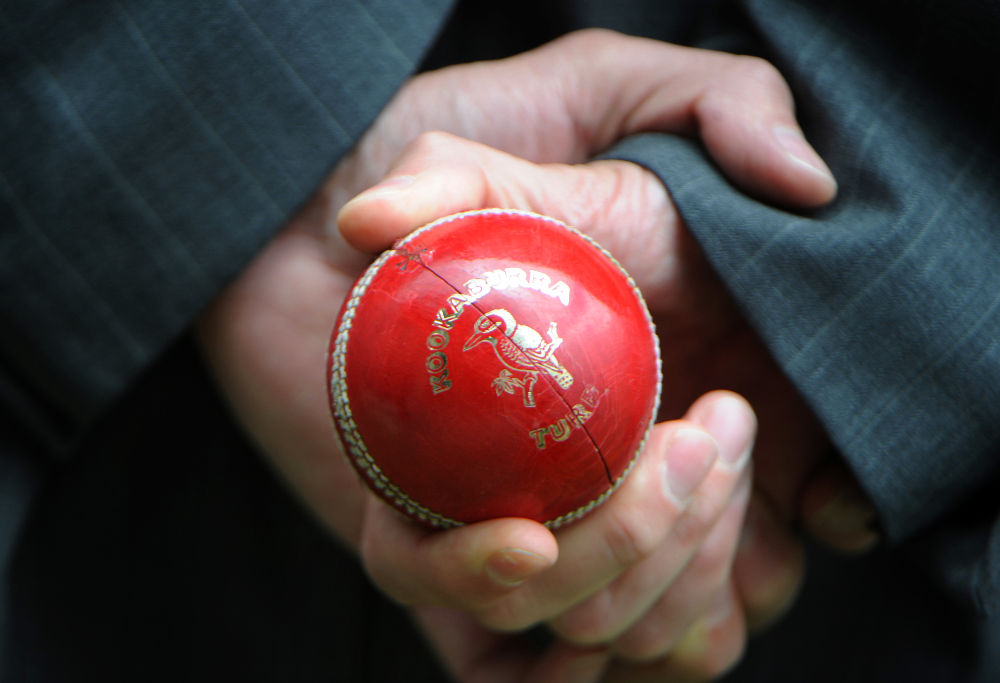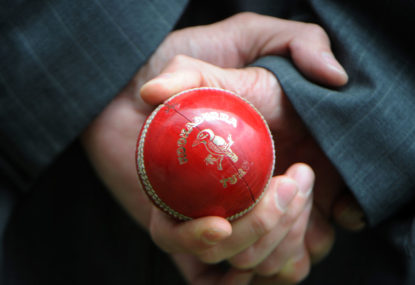Being a natural southpaw, I always had a keen interest in left-arm orthodox spin bowling.
Although some rough treatment from my college batsmen (at Notre Dame) ended my hopes of becoming the ‘Maninder Singh of Bangladesh’ rather prematurely, I still follow the progress of different left-arm slow bowlers around the world with great interest.
Interestingly, as I was introduced to this game in the late 1970s, the state of left-arm spin was possibly in its all-time lowest position. Two great spinners, Bishen Singh Bedi and Derek Underwood were in the twilight of their careers, and after threatening to break the record of Lance Gibbs as the highest test wicket-taker, both would fall short of the 300 mark.
Their replacements, Dilip Doshi and Phil Edmonds respectively, were accurate and persistent but lacked the killer venom of their predecessors. The same thing applied to Iqbal Qasim, Pakistan’s premier left-arm spinner.
As for the other three test nations, there were only six teams playing test cricket at the time. The Windies had no interest in spin bowling at the time – they had just formed their fearsome pace quartet and were working on building the backups. Australia was never the place for orthodox left-arm spin, and New Zealand was just emerging as a test power focusing mainly on their batting and medium pace bowling.
Over the last 40 years or so things have improved, but only up to a marginal level. The likes of Rangana Herath, Daniel Vettori, Shakib Al Hasan and Ravindra Jadeja have performed admirably in different formats of the game, but still they lag behind bowlers from other branches of slow bowling, both in terms of statistics and media attention.
At first I would like to concentrate on the statistics. The left-arm slow bowlers were always part of the game. They have been here from the beginning of international cricket. In fact the late 19th century and early 20th century can be termed as the golden era of left-arm spin, with the likes of Colin Blythe, Bobby Peel and Johnny Briggs – all from England – producing some memorable efforts.
Briggs’s 8/11 against South Africa in 1889 remained the best bowling figures of a left-arm spinner for more than a century till Herath took 9/127 against Pakistan in 2014. In between the wars there was Hedley Verity from Yorkshire. Like his predecessors, Verity would bowl long accurate spells on dry wickets but then would become unplayable on wet or sticky wickets.
Yet a look at the 400-plus club would see only one entry from this department: Herath the Lankan is currently on 418 test wickets. Even this achievement, though highly laudable, seems modest in comparison to Murali’s 800 wickets.
Shifting the focus on limited-overs games wicket-taking records wouldn’t change the scenario. Even left-arm fast bowlers, a relatively small community, is well represented with Wasim Akram and Chaminda Vaas.

(AAP Image/Joe Castro)
The growing popularity of limited-overs cricket has badly affected the left-arm spin bowlers. While the TV channels want the matches to be dominated by batsmen, and bowlers of all types have suffered as a result, the other types of bowlers have reacted better, leaving the left-arm orthodox spinners lagging behind. In this regard I would first look at the case of Maninder Singh, my role model.
A protege of Bedi, he was introduced to test cricket a bit prematurely during the 1982-83 season. After maturing, he emerged as India’s number one spin bowler during the successful tour to England during the summer of 1986. He then had an outstanding time in the long 1986-87 season, bowling brilliantly and taking two ten-wicket hauls in tests.
But things changed completely for him on a hot and humid day at Bombay in the autumn of 1987. It was the semi-final of the world cup. Things started well enough for him – after the new ball bowlers bowled tightly, he came first change and immediately dismissed opener Tim Robinson, stumped by More. The guile of his flight was too much for the Nottinghamshire batsman.
But then a third-wicket stand of 117 between Mike Gatting and Graham Gooch took the game away from India. With, Maninder Singh being the main bowler for India, they tackled him in a planned manner. Whenever he tossed up the ball outside the off stump, Gatting used his feet to drive him. If he bowled full and straight, Gooch swept him.
Maninder eventually dismissed both to finish with 3/54, but the damage was done. India lost its grip on the world cup as Maninder lost his confidence – in fact he was never the same bowler again.
The effect became evident immediately during the four-match Test series against the Windies. He lost his place in the squad after taking only two wickets in three Tests.
The problem with the changed Maninder was that he was too afraid to be hit out of the attack. His line had changed and he was bowling too straight, too flat and too fast. Unable to balance between ODI and Test bowling tactics, he quickly went into oblivion.
However, I did see old Maninder briefly in March 1993, when given an unexpected recall against the new boys Zimbabwe at his hometown Delhi he used all his variation of flights and other tricks to take seven wickets in the test, but no-one took this performance against the ‘minnows’ very seriously.

(Creative Commons)
Coming to the modern spinners, Herath, Sri-Lanka’s main test bowler, is used sparingly in other versions. His last limited-overs international was in March 2016.
Shakib Al Hassan doesn’t get this opportunity. The premier all-rounder of his nation, he has to play in all three formats. In this scenario his Test record of 188 wickets at 32 apiece is quite laudable. Two things have helped him greatly: a good number of his test wickets have come in slow turning pitches ajd he completely changes his bowling style in test matches.
Al Hassan bowls on and around the off stump, bowls at a slower pace and gives the ball plenty of flight. In direct contrast with T20 cricket he bowls what Geoffrey Boycot would describe as ‘left-arm slow’, with little attempt to spin the ball.
Keith Arthurton, from West India, a part-time bowler, used this tactic successfully during the 1996 world cup, especially in the knockout match against South Africa. The idea is to bowl round the wicket to the right-handers, bowl full and flat in the leg-middle stump line, making it very difficult for the batsman to fee his arms.
However, some modern batsman have innovated their own shots to counter such tactics, and the shorter boundaries now used in limited-overs games have certainly helped these batsmen.
Before his retirement from international cricket following the 2015 world Daniel Vettori served New Zealand cricket well in different formats. Unlike the case of Shakib, I haven’t watched his bowling enough to give any analytical comment on this tactics. But a Test average of 34 plus and a strike rate of almost 80 would suggest that he was more of a containing bowler rather than a matchwinning one. His economy rate in all the formats of the game is excellent.
The case of Ravindra Jadeja of India is quite interesting. With a slightly round-arm action, he doesn’t evoke the memory of the lovely smooth delivery action of Bishan Singh Bedi at his prime. But his test record is impressive enough. Prior to the Bengaluru test, his 165 wickets have come at an impressive average of 23.74.
Yet Bedi is mostly viewed as the support spinner to Ravichandran Ashwin, some even see him as a fringe all-rounder more suited to the limited=overs game. Yet his Test average is better than that of Ashwin (25-plus). But with his Carrom ball, and other varieties, Ashwin gets far more media attention than Jadeja.
This would bring us to the second focal point of this article. The attention (or often the lack of it) given to the left arm orthodox bowlers. Over the years, the printed media always loved the leg spinners. And it was not without reason as well – no-one can doubt that a quality leg spinner like Shane Warne can bring extra dimensions to the game.

(AAP Image/James Elsby)
As live TV coverage became more common from the beginning of the 1980s, Abdul Qadir from Lahore became the great favourite of the media, both electronic and printed. His contribution to cricket at a time when all types of spin bowlers were struggling cannot be underestimated, yet his test average of 32-plus along with his tendency to struggle in tests against India casts serious doubts about his position among the greats. His ten wickets at the Oval in 1987 saw raving reports coming from everywhere, yet prior to that test he had only taken five wickets in his previous six tests.
Largely contemporary with Qadir was Iqbal Qasim, a left-arm spinner from Karachi. Despite taking 171 Test wickets, he never got the media attention he deserved, yet his average of 28.11 is considerably better, and he played his part with nine wickets in Pakistan’s famous triumph at Bengaluru in 1987.
For many decades right-arm off break bowlers, just like left-arm spinners, were happy to do their work without getting enough media attention. While the likes of Jim Laker or Tony Greig used their personal charisma to grab the headlines, the likes of Fred Titmus, David Allen and John Emburey were just happy to quietly go along with their job.
In India the great Prasanna was the thinking bowler. His plan was to outthink the best batsmen in the world. There was no doosra or any mystery delivery in his stocks.
Things, however, started to change in the 1990s as Muttiah Muralitharan, Saqlain Mushtaq, Harbhajan Singh came, with Ashwin and Saeed Ajmal following their footsteps. With the carrom ball, the doosra and other varieties, these spinners get a lot of media attention. The left-arm spinners don’t possess such varieties – even their arm ball, the one comes into the right-hander, is viewed by many pundits as a defensive weapon.
Interestingly, Murali, Harbhajan and Ajmal all had some issues with their delivery action at some point in their career, but even this increased their media profile; controversies create news, and the general public loves news.
[latest_videos_strip category=”cricket” name=”Cricket”]
Finally, rarely a group of spin bowlers have received disproportionately greater attention. One group is the left-arm wrist spinners. Because of their rarity, their statistics matter little. Things like Suresh Raina, one of the finest players of spin bowling, struggling to pick Brad Hogg in IPL couple of seasons back or Kuldeep Yadav dismissing an in-form Kane Williamson in this year’s version are enough to create the headlines.
The other group is the so-called mystery spinners, who can turn the ball in both ways generally using unusual bowling actions. The ‘Guru’ of this group, Jack Iverson from Victoria, had just one season of international cricket but still made enough headlines. The other prominent members of this group include John Gleeson, Ajantha Mendis and Sunil Narine. Even Mujjeb Ur Rahman can be included in this group.
So the left-arm orthodox spinners were always here and they will always remain in the game. They will dutifully manfully carry on with their job, they will get some attention from the media but they will seldom have the limelight on them. There are other groups waiting for that.
In the context of the modern game, the left-arm spinners are like Dr Watson in a Sherlock Holmes story or Shashi Kapoor in a Amitabh Bachchan movie.
I would dearly love to see the left-arm orthodox spinners get greater recognition for their efforts. Perhaps it would take a Bedi-like charismatic character to appear and use his personal charisma to draw the media attention more towards this classical form of bowling.
































































































